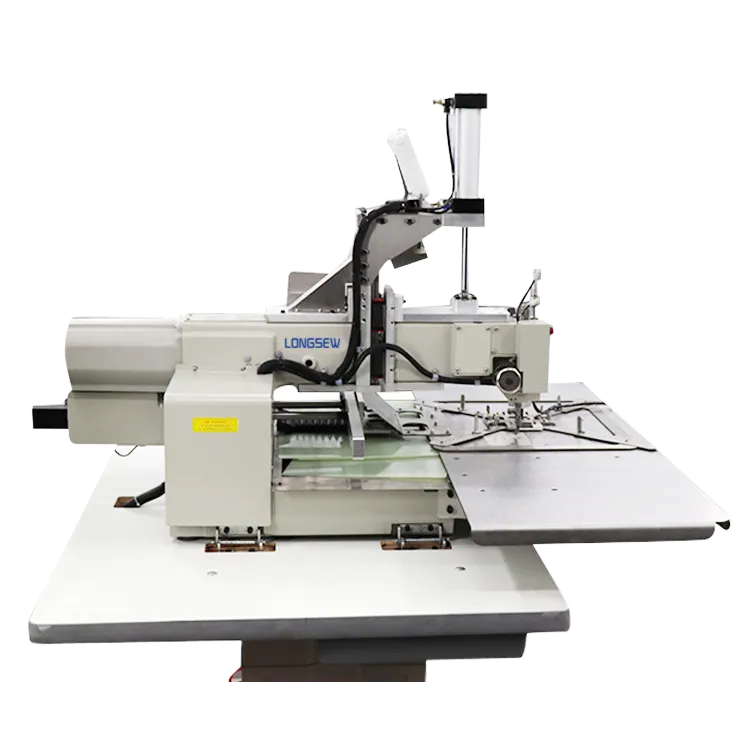Baffle Sewing Machine Techniques for Efficient and Creative Fabric Manipulation
The Baffle Sewing Machine Revolutionizing Textile Craftsmanship
The world of sewing has long been a realm of creativity and precision, where artisans transform fabrics into beautiful creations. Among the tools that have significantly impacted this craft is the baffle sewing machine. This specialized device has introduced a new level of efficiency and effectiveness to sewing projects, particularly in the manufacture of quilts, pillows, and various padded products. Understanding the functionality and benefits of the baffle sewing machine is essential for both amateur and professional sewists looking to elevate their work.
What is a Baffle Sewing Machine?
At its core, a baffle sewing machine is designed to create baffles—these are fabric compartments that keep filling materials, such as down or synthetic fibers, evenly distributed within a shell. This ensures that items like comforters or outdoor jackets maintain their warmth without creating cold spots. The baffle sewing process involves sewing fabric channels that hold the filling securely in place, preventing it from shifting and clumping. This is particularly important in products where insulation and even distribution of filling are critical for performance and comfort.
How Does it Work?
The baffle sewing machine operates using a simple yet effective mechanism. It typically features multiple needle positions and adjustable stitch lengths, allowing the user to customize the baffle creation process according to the specifications of their project. The machine applies consistent pressure, ensuring clean and precise stitching that can handle various fabric types and thicknesses.
The sewing process generally involves the following steps
1. Preparation of the Fabric Shell The outer fabric is cut and layered with linings as necessary. 2. Placement of Baffle Strips Baffle strips, which are often made from the same fabric, are placed within the outer shell at designated intervals. 3. Sewing the Channels The baffle sewing machine stitches through the baffle strips and the outer fabric, creating channels for the filling to be inserted. 4. Filling the Channels Once the channels are created, the filling material is added to each compartment, ensuring an even distribution throughout the piece. 5. Final Assembly After all channels are filled, the final seams are sewn to close the shell, completing the project.
baffle sewing machine

Benefits of Using a Baffle Sewing Machine
The introduction of baffle sewing machines has transformed the way sewers approach their projects. Here are some key benefits
1. Precision and Consistency The machine facilitates exact measurements and uniform stitching, which is vital for high-quality finished products. This precision reduces the risk of cold spots in items designed for warmth.
2. Efficiency The automated processes of a baffle sewing machine significantly speed up production, especially for mass-made items. What might take hours to sew manually can be accomplished in a fraction of the time.
3. Versatility While primarily used for quilting and insulated apparel, baffle sewing machines can be adapted for various projects, making them a valuable tool in any sewing arsenal.
4. User-Friendly Features Many modern baffle sewing machines come equipped with digital displays, programmable settings, and built-in tutorials, making them accessible even to beginners.
Conclusion
The baffle sewing machine stands as a testament to the advancements in sewing technology, merging traditional craftsmanship with innovative engineering. For those who engage in textile arts, understanding and utilizing this machine can lead to unparalleled results and enhanced creativity. Whether you are crafting a cozy quilt or developing performance apparel, embracing the capabilities of a baffle sewing machine may just be the key to taking your work to the next level. As the sewing industry continues to evolve, tools like these transform not just the art of sewing but also the very fabric of our everyday lives.
-
Boost Production Efficiency with a Pattern Sewing MachineNewsAug.29,2025
-
Industrial Excellence with the Best Heavy Duty Sewing MachineNewsAug.29,2025
-
Precision and Power with the Best Pattern Sewing MachineNewsAug.29,2025
-
Reliable Bulk Packaging Starts With the Right FIBC Sewing MachineNewsAug.29,2025
-
Advanced Packaging Solutions: Elevate Productivity with Jumbo Bag Sewing Machine and Industrial Stitching EquipmentNewsAug.29,2025
-
High-Performance Solutions for Bulk Packaging: FIBC Sewing Machine and MoreNewsAug.29,2025
-
Maximize Efficiency with an Industrial Cylinder Arm Sewing MachineNewsAug.28,2025


























